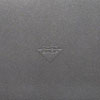Chop Shop, "Oxide"
 The inevitable fallibility of magnetic media can, while being frustrating as all hell to an artist, provide the impetus for an even better creation. Oxide represents such a creative disaster: old cassettes and reels of tape had been accidentally subjected to moisture damage. Instead of tossing them, Scott Konzelmann strung them up and pulled what he could off of the decaying tape and built this new work out of the remnants in his first full length release in quite awhile.
The inevitable fallibility of magnetic media can, while being frustrating as all hell to an artist, provide the impetus for an even better creation. Oxide represents such a creative disaster: old cassettes and reels of tape had been accidentally subjected to moisture damage. Instead of tossing them, Scott Konzelmann strung them up and pulled what he could off of the decaying tape and built this new work out of the remnants in his first full length release in quite awhile.
The structure of the single 49 minute track alone is a metaphor for the fickle nature of magnetic tape: it has a very cut & paste quality, but without the per-sample perfection of digital audio editing tools. Instead, it feels raw and unpolished, like art based on rotting audiotape should. The rough structure is only amplified by the actual sounds that lie within it. Sonically it is a rather noisy work, sounds resembling machinery rattles, amplified sandpaper, abrasive textures, etc.
It is jarring at times, listening to what may simply be amplified and processed tape hiss requires careful attention to hear subtleties before the listener is slapped in the face by a raw blast of pure audio sludge. From the sound of things, it doesn't sound like a great deal of processing was used to the original raw material, since it sill retains such an unaffected, analog quality. The original sounds were based around Konzelmann’s traditional approach to music: utilizing various junkyard sonic installations to create a veritable Sanford and Son noise orchestra. However, the decay of tape makes this less relevant but doesn't hamper the artistic quality of the work.
The actual sound of decay that is presented here is by far its strongest asset: the listener can practically hear the creases in the tape, pieces of magnetic oxide that may have flaked off due to environmental damage, mold blocking the tape heads, etc. Often, the minimal nature of the damage is fascinating: the sub-bass hum and crackle at around the 17 minute mark are among the most compelling audio textures I've heard in material like this. The parts that are more dissonant rank up there with the best of the analog noise kings, before folks like Merzbow traded in their junk gear for Powerbooks.
The overarching analog sound of this work is what makes it stand on its own amongst its peers. No matter how complex one can make a Max/MSP patch, or how many modules one can load into Reaktor, getting textures and sounds like are found here simply isn't the same. Perhaps the most adept artists could model sounds like this, but I'm skeptical that it would retain the same warmth and fascinating microcosmic worlds that are here. An abstract, occasionally violent, but undeniably amazing collection of accidental textures and sounds.
samples:



